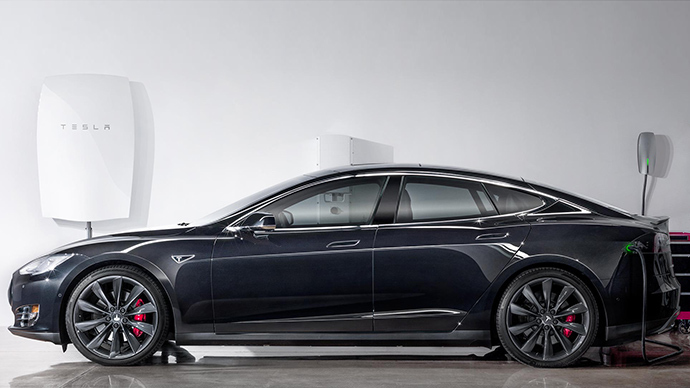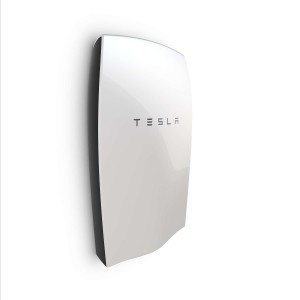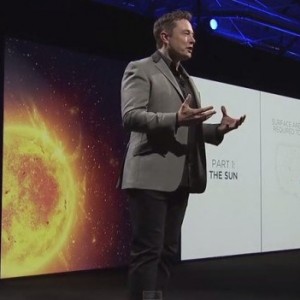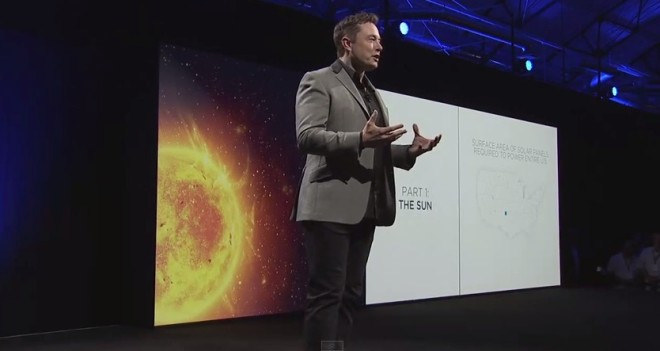Renowned for creating the world’s foremost luxury, high-performance electric vehicle, Elon Musk is at it again, this time with his highly innovative solar energy battery system that is poised to have significant on the world of renewable power.
Tesla’s new solar energy battery is being seen as the way of future and is set to make some changes in the industry. Just like Tesla’s Model S on the global motor industry, the new solar storage system is another revolutionary milestone in the changing world of energy.
Solar energy battery by Musk set to revolutionize industry
“What if we could move the electricity grid away from fossil fuels and towards renewable energy sources?” Musk explained in a prepared statement during the launch of Tesla Energy. “Once we’re able to rely on renewable energy sources for our power consumption, the top 50% of the dirtiest power generation resources could retire early. We would have a cleaner, smaller, and more resilient energy grid.”
The long awaited solar energy battery system is bound to be a watershed for the rapidly changing global energy market. With just one swoop, Tesla has slashed stationary battery storage costs by more than half; blowing away the prospects of current utilities and fossil fuel generators.
Tesla battery improves solar energy’s ability to handle load shifting
The Tesla Powerwall is the piece that has been missing in the energy technology revolution. The lithium-ion battery is rechargeable and designed to store energy at residential levels for load shifting, backing up power in case of an outage, and increasing self-consumption of solar energy generation.
Unlike the conventional battery storage systems, the lithium-ion battery features a battery pack, liquid thermal control system and software which receives the solar inverter dispatch commands. The storage battery is easy to mount on a wall and is already integrated with the local grid.
Tesla’s storage product range which incorporates utility-scale and commercial storage systems will be availed in Australia early next year.
Recently launched by Tesla’s CEO Elon Musk in the company’s California design studio, Deutsche Bank estimates that the lithium-ion battery will sell for $US3,500 for a 10kWh system and $US3,000 for the 7kWh – excluding installation and inverter costs of approximately US$500 per kWh, which is less than half the current industry costs of $US1,000-$US1,250/kWh.
New Tesla storage technology cheaper and more efficient for Australians
Even with the additional shipping and foreign exchange costs, Tesla technology is a great step change for Australians. The new storage battery system is a cheaper and more efficient option to the incumbent Australian solar system arrays and is likely to significantly cut consumption from the grid, with relatively faster pay back times.
The world’s new sleek Powerwall; which is simply a wall-mounted solar energy battery unit, can hold up to 10 kWh of electric energy to be delivered at an average of 2 kWh per day. So, what’s it worth to Australian consumers and the conventional energy providers? What this means is that the cost of combining lithium ion storage and rooftop solar battery storage is now cheaper than the coal-fired power channeled through the conventional grid; especially in areas with hot sun and high electricity costs in Australia.
In addition, the availability of Tesla’s storage battery will have huge implications for Australian generators, retailers and network operators. Fast tracking the entry of the new solar energy battery means an accelerated exit of coal-fired generation; which would be a massive disruptive initiative for incumbent utilities and other battery suppliers.

Improvements in solar technology accelerate fossil fuel decrease
In essence, the Tesla pricing for the home solar energy battery systems translates energy delivery at about US6-8 cents per kWh to a solar system for every household.
“This implies that solar + batteries are already competitive in high priced areas like Hawaii,” Deutsche Bank explained, adding that greater cost reductions are expected in future with increased production at the new “gigafactory” in Nevada.
With Australia’s excellent solar resources, huge rooftop solar penetration (at least one in four houses in most states), and the high electricity costs (approximately 30c/kWh and rises during times of use in some areas), the new solar energy battery technology is bound to have huge implications on the country’s energy industry which finds itself at crossroads with this revolution.
In 2013, the CSIRO predicted that large solar energy battery systems could be economically effective in the global market around 2040. In 2014, AGL indicated that this might take place in 2030. UBS predicted going totally off grid could be economic in 2018. Looking at it now, it seems, solar energy battery systems would be competitively available for the average Australian household in early 2016, when the first Tesla battery will be delivered to Australia.
Tesla Motors to change energy industry market dynamic as early as 2016
This then explains why AGL; which had in a statement last month indicated that it would phase out coal-fired system by 2050, recently said it would accelerate its solar battery storage offering to consumers. Meanwhile, Sungevity said it’s working with Sonnenbatterie to produce $10,000 systems for consumers. More utilities now realise they need to fast track their solar energy innovations in order to stay relevant in the rapidly changing industry.
 According to the solar power billionaire Musk, Tesla is not just an automotive company, but an energy innovation company as well with the objective to help homes, utilities and businesses to “store sustainable and renewable energy to manage power demand, provide backup power and increase grid resilience.” The Tesla technology would ultimately shift many homes off-grid altogether, giving them a high sense of independence, and ability to operate small appliances even with power outage.
According to the solar power billionaire Musk, Tesla is not just an automotive company, but an energy innovation company as well with the objective to help homes, utilities and businesses to “store sustainable and renewable energy to manage power demand, provide backup power and increase grid resilience.” The Tesla technology would ultimately shift many homes off-grid altogether, giving them a high sense of independence, and ability to operate small appliances even with power outage.
Musk further explains that over 160 million of the commercial scale version Tesla power packs have the capability to transition the US into a 100 per cent renewable energy, majorly solar. Approximately 900 million power packs could transition the world, while 2 billion of these could do it, including heating and transport.
While “that may seem like an insane number … but it is not. The number of cars and trucks we have on the road is 2 billion,” Musk added.
“This is within the power of humanity to do. It is not impossible. It is something we can do,” he said. “And that is the future we need to have.”
Compared to the existing unreliable and expensive batteries, Tesla’s solar energy battery which encompasses storage and renewable power generation, and are low-end priced, Musk’s Tesla Energy $5 billion production line is indeed the biggest of its kind in the world and the future that is already here with us.
Photo courtesy of General Physics Laboratory (GPL)

